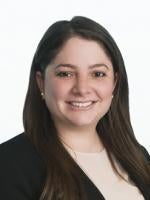On October 9, 2019, the US Department of Health and Human Services Centers for Medicare and Medicaid Services (CMS) published proposed changes to the physician self-referral law (Stark Law), which includes an important clarification affecting certain group practices’ compensation models.
IN DEPTH
Overview
On October 9, 2019, the US Department of Health and Human Services Centers for Medicare and Medicaid Services (CMS) published proposed changes to the physician self-referral law (Stark Law). Physician practices are subject to the Stark Law, and the proposed rule includes an important clarification affecting certain group practices’ compensation models.
CMS proposes to revise its regulations to clarify the special rule for group practice distributions of income from Stark designated health services (DHS). Compliance with this special rule is a requirement of the Stark Law’s definition of a “group practice,” and compliance with the “group practice” definition is generally necessary for physician groups to have the protection of the in-office ancillary services (IOAS) exception to the Stark Law. The special rule for sharing DHS profits permits a group, or a pod of five or more physicians in the group, to pool their DHS income and distribute the pool in a manner that does not directly take into account the volume or value of any physician’s referrals for DHS.
For years, there has been a debate within the health law bar regarding how these DHS income pools can be structured under the special rule. One position is that the special rule permits pools to be organized by DHS, meaning, for example, that if the group’s only DHS are imaging and physical therapy services (PT), the group can have one pool for diagnostic imaging income in which one set of five or more physicians participate, and another pool for PT income in which another (perhaps overlapping) set of five or more physicians participate (split-DHS income pooling). The other position is that the special rule requires that the DHS income pool must include all the DHS generated by the participating physicians. In such a case, the imaging and PT pools described above would have to be consolidated (all-DHS income pooling).
CMS’s Proposed Amendment
CMS proposes to amend the regulatory language to clarify that DHS income pools must include the profit from all the DHS of the physician practice (or a component of at least five physicians in the practice). Importantly, CMS has not made any statement indicating that physician groups that have used the split-DHS income pooling failed the special rule on DHS pooling and distributions. CMS has only acknowledged that the industry found the current regulatory text ambiguous and so CMS is making a revision to clarify its intent.
Under this proposal, once finalized, no physician group will be able to take the position that the special rule permits split-DHS income pooling. Similar to the example given above, CMS provides the example of a physician practice that provides both clinical laboratory services and diagnostic imaging services—both DHS—to its patients. To qualify as a “group practice,” which is generally necessary to have the protection of the IOAS exception, the group may not distribute the profits from clinical laboratory services to one subset of its physicians and distribute the profits from diagnostic imaging to a different (perhaps overlapping) subset of its physicians.
In addition, CMS made a statement in preamble discussion that could be construed to mean that CMS interprets the special rule to require that the practice use a single distribution methodology for distributing the all-DHS income pool. In some cases, physician groups have formed an all-DHS income pool, but have divided the pool’s income from one DHS (e.g., imaging) on an equal per capita basis, and the pool’s income from another DHS (e.g., lab) on the basis of the physicians’ relative clinical productivity, all to the same physicians. Both of the methodologies are permissible and arguably result in a distribution of the pool that does not directly take into account the volume or value of any physician’s referrals for DHS. However, this statement by CMS could be construed to mean that, even when all-DHS income pooling is used, and all the same physicians are participating in all of the pool, the practice must use a single methodology for determining each physician’s “share of the overall profits.” CMS likely will be asked in comments on the proposed rule to clarify its intent in this regard.
Takeaways
Because changes to physician compensation take time, group practices that have, with or without advice of counsel, taken the position that they can use split-DHS income pooling, or can distribute an all-DHS income pool using different methodologies for different DHS income, should begin evaluating their DHS income pools. While certainly not without doubt, CMS is likely to stand by its proposed amendment to the special rule, because CMS states that all-DHS pooling interpretation was always its original intent for the special rule. Physician practices should consider how this proposed amendment could affect their current compensation models and whether any restructuring may be required if the amendment is finalized. CMS is accepting public comments on the proposed rule until December 31, 2019.






 />i
/>i

